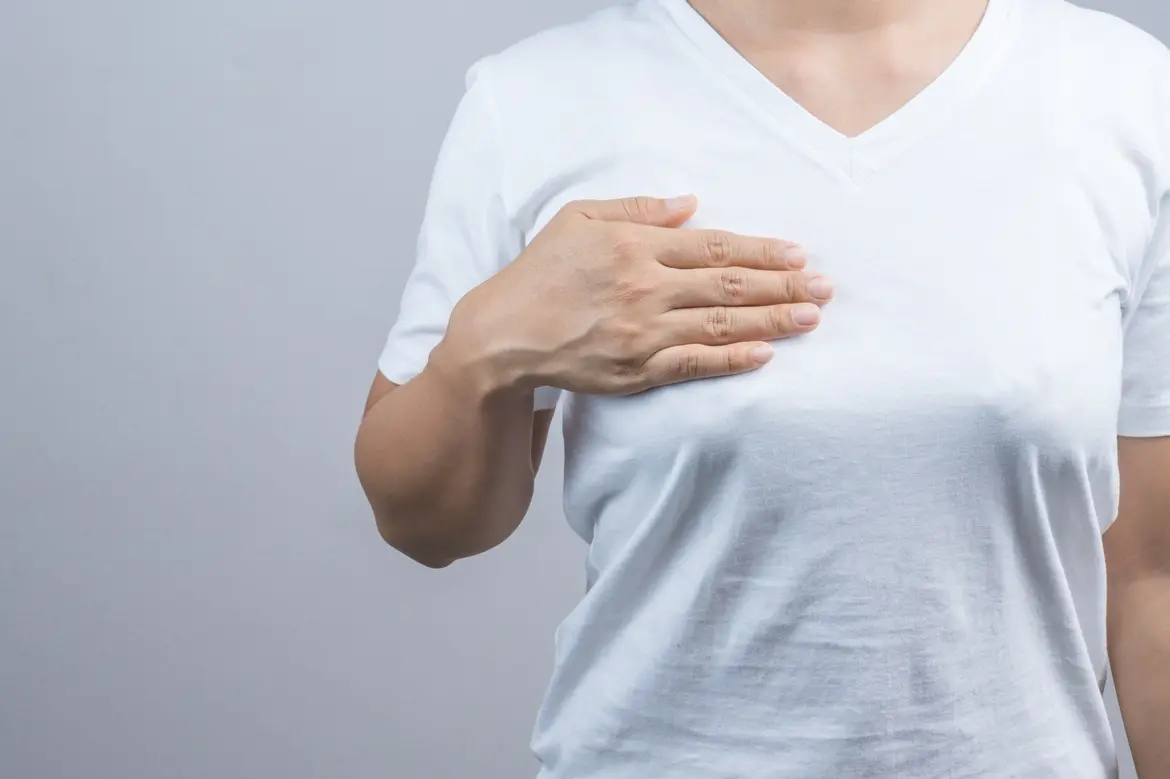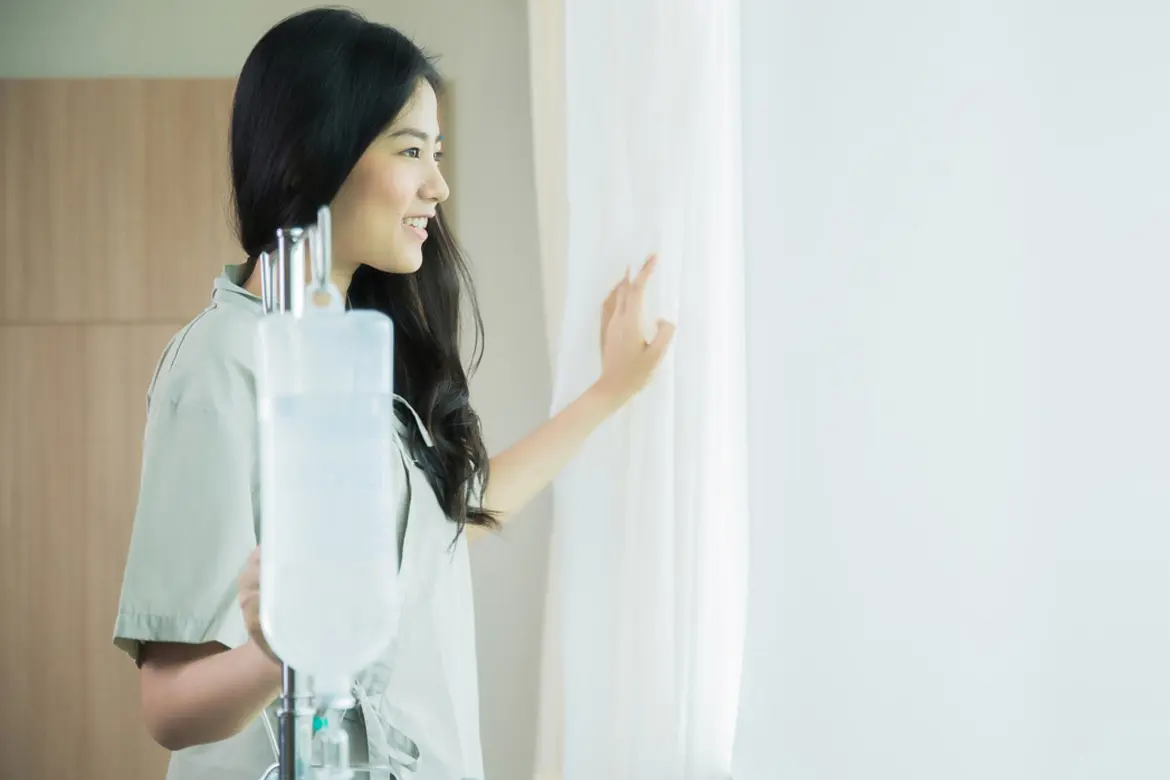Breast cancer is the most common cancer among women in Singapore and in many Western countries. Dr Tan Yah Yuen, breast surgeon at Mount Elizabeth Hospital, explains how risk assessment tools calculate your risk of breast cancer, and how doctors then determine preventive options based on your assessed risk.
There has been greater awareness of breast cancer in recent years because of the disease's prevalence and partly due to the publicity created by an American actress, Angelina Jolie. Jolie was diagnosed with an increased risk of breast and ovarian cancers because she inherited a BRCA gene mutation, which is a defect in the BRCA gene that suppresses tumours. The actress made headlines when she chose to remove her breasts and ovaries to lower her risk of cancer.
However, in reality, Dr Tan says, "Less than 10% of breast cancers are due to genetic predisposition." As more women develop breast cancer, it is important to ask the following 3 questions.
Do I need genetic testing for breast cancer?
Mutations in BRCA 1 and 2 genes are responsible for the majority of genetic breast cancers. BRCA 1 and 2 are genes that suppress tumours. When these genes are mutated, cells multiply uncontrollably, which increases the risk of both breast and ovarian cancers.
Signs that you may have a BRCA gene mutation include:
- Diagnosis of breast cancer at a young age, ie. less than 50 years
- Bilateral breast cancer (tumours that occur in both breasts)
- Having both breast and ovarian cancers
- Breast cancer in a male family member
- Multiple cases of breast cancer in the family
- Having an Ashkenazi ethnicity (Jews in France, Germany and Eastern Europe)
However, Dr Tan cautions that genetic testing can be complicated, thus pre and post-test counselling are required to ensure that women fully understand the benefits and limitations of genetic testing. For instance, a positive genetic test does not mean that the woman will definitely develop cancer, while a negative test does not mean that it is impossible to develop cancer.
How can my doctor calculate my risk of breast cancer?
Several statistical models may be also used to calculate the risk of breast cancer by taking into account age, menstrual history, age of live births, previous breast biopsy results and family history. However, Dr Tan qualifies that these models are based on databases of patients in the West. There is currently no statistical model based on Asian populations in Asian countries.
Nonetheless, Dr Tan suggests two models that estimate women's risk of breast cancer, each with its pros and cons:
- The International Breast Intervention Study (IBIS) risk tool or Tyrer-Cuzick model is a validated tool based on data from the United Kingdom.
- The National Cancer Institute breast cancer risk assessment tool is derived from an American database.
If I am found to have increased risk of breast cancer, what preventive measures should I take?
Depending on the risk each individual has, doctors may employ different strategies.
Enhanced surveillance screening
Women with increased risk of breast cancer should undergo an annual mammography, which is an x-ray of the breast. Mammograms should start 10 years earlier than the youngest breast cancer case in the family but not before 30 years old, in order to minimise radiation exposure at a young age.
As young women have dense breasts, they may also undergo tomosynthesis, which is a form of multi-slice mammogram imaging that is more sensitive and improves cancer detection rates. However, radiation exposure in tomosynthesis is significantly greater than a conventional mammogram x-ray. Patients usually undergo tomosynthesis when the benefits of screening outweigh the radiation exposure.
On the contrary, according to Dr Tan, magnetic resonance imaging (MRI) does not use x-ray radiation and is the most sensitive in detecting invasive cancer in young women. MRI is particularly beneficial for the following women:
- BRCA gene mutation carriers (MRI screening should begin as early as 25 years old for them)
- 1st degree relatives of a BRCA gene mutation carrier
- History of radiation therapy at the chest wall between the ages of 10 – 30 years, eg. during a previous cancer treatment
- More than 20 – 25% lifetime risk of breast cancer (as assessed by the risk tools above)
As breast enhancement can be affected by hormonal changes during the menstrual cycle, the MRI should ideally be done on day 7 – 15 of the menstrual cycle, which will reduce diagnostic error. MRI should be done annually, starting 10 years earlier than the youngest breast cancer case in the family but not before 25 years old.
In practice, however, MRI of the breast is expensive and may not be affordable on a routine basis. Dr Tan says, "If cost is a concern, the addition of routine breast ultrasound to annual mammogram screening may be more practical." Women with significantly higher risk of breast cancer should, however, undergo MRI screening in addition to annual mammography.
Chemoprevention
Chemoprevention is the use of natural chemicals that prevent the development of invasive breast cancer, either by blocking the DNA damage that initiated the cancer formation or by stopping the progression of premalignant cells from becoming malignant.
According to Dr Tan, drugs such as Tamoxifen, Anastrazole and Exemstane have been shown to reduce breast cancer rates by about 50% in women with increased 5-year risk of more than 1.66%, as assessed by the National Cancer Institute breast cancer risk assessment tool. However, for women with average risk, Dr Tan notes that there is no evidence that chemoprevention reduces breast cancer incidence.
Dr Tan also cautions that these drugs might have adverse side effects, such as weight gain, venous thromboembolism (blood clot in veins), pulmonary embolism (blood clot in lung artery), endometrial (womb) cancer and osteoporosis (brittle bones). That is why most women decline chemoprevention despite having an increased risk of breast cancer. Women who are keen in chemoprevention should consult an oncologist to discuss its benefits, limitations and risks.
Risk-reducing surgery
Bilateral risk-reducing mastectomy is the surgical removal of both breasts. It has been found to reduce the risk of breast cancer by at least 90% in women with increased risk of breast cancer, such as BRCA gene mutation carriers. In recent years, advances in breast reconstruction techniques have made mastectomy a more attractive option.
However, there has been concern about the overzealous uptake of the removal of the healthy breast in addition to the breast with cancer. According to Dr Tan, removal of the healthy breast is not necessary in the majority of women with newly diagnosed breast cancer. This is because they do not have a cancer gene or significant family history, thus the estimated risk of a 2nd breast cancer in the healthy breast is 0.5% per annum. The use of chemoprevention, such as Tamoxifen, will further reduce this risk over the years.
Dr Tan says, "While women may instinctively desire removal of both breasts at the point of diagnosis of breast cancer, it is often a knee-jerk reaction." Instead, they should receive adequate counselling and have a cooling-off period before making a decision, when they are less emotionally vulnerable.
Most importantly, women should understand that a bilateral mastectomy of both the diseased and healthy breasts
Does not improve cure rates of the current cancer
Does not reduce the amount of treatment necessary to treat the current cancer
Does not entirely prevent cancer development in the healthy breast
May occasionally delay the treatment of the current cancer due to increased surgical complications
Nonetheless, bilateral mastectomy is particularly useful for women with increased breast cancer risk, such as BRCA gene mutation carriers or those with a significant family history of breast cancer.
Women who receive a mastectomy can then undergo an immediate breast reconstruction, either through breast implants or grafting, which uses tissue from another part of your body. The type of reconstruction depends on your breast size, physique, cancer stage (if present), the patient's personal preference and risk factors such as obesity, smoking history and diabetes mellitus.
Lifestyle modification
Healthy eating is recommended, although there is no clear evidence that specific dietary components can effectively reduce breast cancer risk. In particular, alcohol consumption has been found to be a consistent risk factor, thus women with increased risk of breast cancer should reduce their intake.
Women should also maintain a healthy body mass index (BMI), especially after menopause. A BMI above 31 is associated with a doubled risk of postmenopausal breast cancer. A weight gain of more than 25kg after 18 years old is also associated with a 50% increased risk of invasive breast cancer. While observational studies have suggested that higher levels of physical activity may reduce the risk of breast cancer, Dr Tan says that this may be related to its role in controlling weight gain rather than due to physical exercise itself. In general, all persons are encouraged to engage in at least 30 minutes of moderate to vigorous intensity physical activity at least 5 days a week.
Find out more about breast cancer screening or talk to one of our specialists today.












